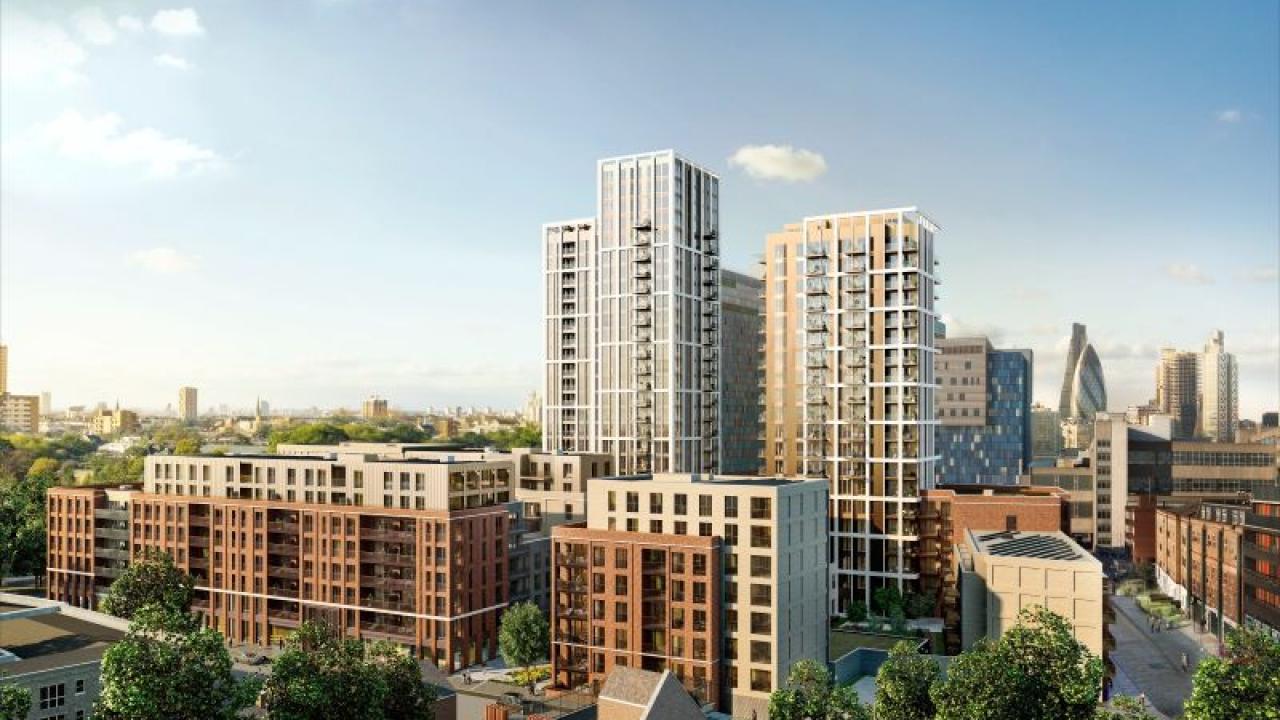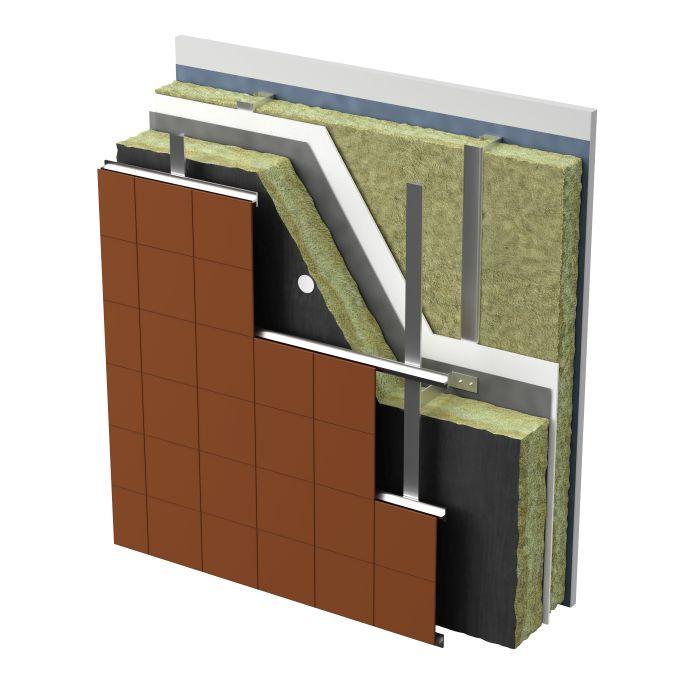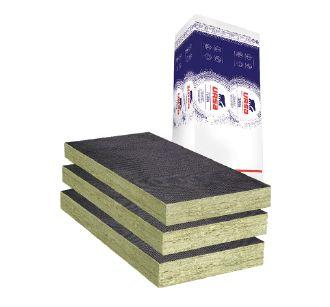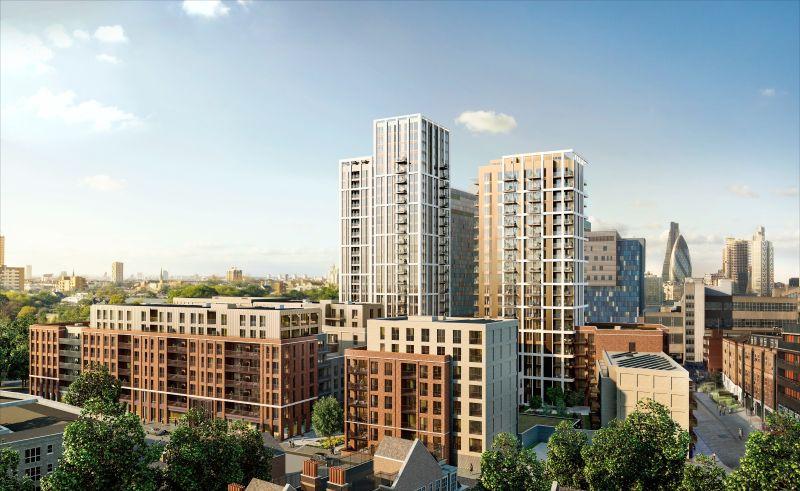

Specifying insulation in rainscreen systems with URSA by Etex
We talk to Danilo Gomes PhD, from URSA, about how early engagement with manufacturers can help architects have more confidence when specifying rainscreen systems.
4.jpg)
In recent years, rainscreen cladding systems have become more and more popular with architects. But post-Grenfell, their specification has come under greater scrutiny than ever. We talked to Danilo Gomes PhD, Technical Sales & Specification Manager at URSA – the UK specialists in glass mineral wool insulation for rainscreen systems and part of the global Etex Group – about how manufacturers can help architects and specifiers during the specification process.
And with 38% of architects reporting they spend a lot of time educating clients on the Building Safety Act and new regulatory framework, that’s about more than just making the right product choices for their specific project.
Danilo, how is specifying insulation for rainscreen systems different?
I think to understand that, first it’s important to look at how rainscreen systems work. Rainscreen systems are suitable for particular types of buildings, such as high rise, for a number of reasons. They work as an envelope around the building, creating a cavity between the outer cladding panel and the inner part which is the insulation and sheathing boards. Because of the different material components and the way they’re structured, they can be lightweight – so if you think of the whole building envelope, having a lightweight system makes the whole building less heavy.

From an aesthetics point of view, Rainscreen systems can use different materials, like metal, masonry or ceramic cladding, even on the same building, to create a different look. If the system being proposed has gaps between the cladding, our products have a black tissue facing which sits behind the cladding and helps give the building a clean, seamless look.
In terms of specifying, it’s important to know the roles of each of these components; how they perform, and what effect they have on the thermal, acoustic and fire safety performance you want to achieve. The type of insulation has a big effect on that, which is where we can help.
Is there anything specifiers can refer to, as an introduction to using rainscreen systems?
There’s a lot of material out there, for example the NHBC Standards and Building Regulations, that give guidance on the acceptable forms of rainscreen cladding, and of course our own URSA Rainscreen Design & Installation Guides which is a really useful reference for the installation of URSA products in rainscreen applications.
Obviously there have been recent changes in regulations and the future building standards – how have they affected specifying insulation with these systems?
These changes and updates have made architects and specifiers more liable, more responsible than they used to be. We know from research that one of their big concerns is knowing the products they specify will perform as they should and meet the regulation. They are also responsible for making sure the right information is passed on down the line, to contractors and installers. It all starts with the specifier. This is why it’s so important for them to engage with us as early as possible in the process, so we can help and guide them to solutions that give them the performance they need.
To ensure clarity and confidence in our data, we are registered with the Code for Construction Product Information (CCPI), and our products URSA WALLTEC BLACK 32 and URSAPAN BLACK hold the CCPI Assessment Mark. This gives specifiers the reassurance that our product information is clear, accurate, accessible, up-to-date and unambiguous, in accordance to CCPI’s strict guidelines. Given the increasing responsibility of architects and specifiers, providing data that can be relied on is of the utmost importance and architects can show their support for these assessments by signing up to CCPI as a supporter.
Architects and specifiers should also look out for BBA certifications, a UKAS-accredited product certification body that specialises in assessing and certifying products for the construction industry. URSA WALLTEC BLACK 32 and URSAPAN BLACK are the only BBA-approved insulation for use as sheathing insulation in rainscreen cladding.

So what should specifiers look at first with insulation?
In most cases, its primary purpose is thermal performance. The building regulations say that if you are designing a new build, the wall should perform in a certain way, measured by U-values – and meeting that requirement is mostly determined by the insulation. So you start by looking at what U-value you need to achieve, and then we can calculate it from there.
As with all these calculations, every element within the rainscreen system – like the sheathing board, for example – will have an influence over the performance, and acoustic performance varies slightly across our product range. So, if we know what needs to be achieved, we can help you specify the right product to meet the requirements.
Fire performance is key, isn’t it?
Of course. But here the regulations specify two different ways of looking at fire resistance. One way is to assess the whole system, taking into account all the materials used, which according to Approved Document B of Building Regulations needs to resist fire for 30 minutes in some cases and 60 minutes in others, depending on the building. We often get asked if we have those kind of test results, but as every building is different each would need to be tested individually, which tends to be impractical and very expensive. The other way the regulations assess fire safety is by looking at the fire performance of each individual material. Being glass mineral wool, our insulation products are deemed non-combustible with a fire classification of Euroclass A1 (the highest possible rating) when tested to EN 13501-1:2018 Reaction to Fire.
Sustainability is an important consideration for many specifiers. How does rainscreen insulation help with that?
In terms of our glass mineral wool rainscreen insulation products, they’re made from up to 73% recycled material and have a generic BRE Green Guide rating of A+, which helps from an environmental impact perspective. When you’re comparing with other types of insulation, I think for sure it’s important to look at not just the product itself, but also how it’s manufactured and its recyclability, which will influence in the carbon footprint of the project.

So in summary, what would be the most important point you’d make about specifying insulation with rainscreen cladding?
I would always say talk to us as early as possible in the design process. It can seem very complex, but we can help with calculating performance, meeting fire regulations…if you have initial questions about how to approach designing a system, we can offer all sorts of advice. We think specification should be a collaborative process between designers and manufacturers, so we’re always here to help. With that in mind, we have lots of technical documents available and are developing CPD materials around specifying for rainscreen, so even if you don’t have a project upcoming, it’s worth getting in touch. And we’ll always respond as quickly as possible!
For more information please visit https://www.ursainside.co.uk

